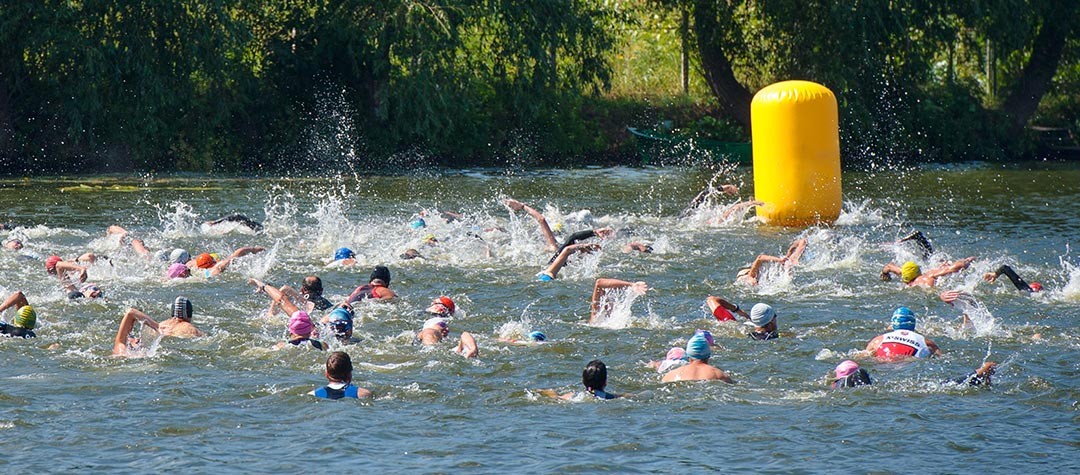Whatever the distance 1.5k, 3k, 5k or the Olympic distance, it is important to have a strategy prior to your open water event. Studying the route, where the buoys are, and having a race plan can be crucial to your success, says open water swimmer Adam Walker.
The open water race start
Whether the start is diving in or starting in the water, get yourself in the best position possible and think about the route you want to take to the first buoy. Some competitors prefer to take an outside route trying to avoid the middle of the field with the mass of arms and legs flying around.
If you are starting in the water, make sure you make yourself as wide as possible by sculling on your front with egg beater to prevent any other competitors getting too close to before you start.
Pacing yourself and drafting
Aim to get into you pace and rhythm early and ideally follow the leading pack. You can then draft off one of the swimmers in front of you. By drafting you can save up to 30 per cent of energy.
The bow of a wave created by a swimmer has forward and lateral movement. The faster the swimmer, the better the draft is behind. The size of the swimmer in front breaking the water can also make a difference and the closer you are, the better the draft. The ideal position is between the ankles and the hips.
The bow wave will be the length of the swimmers body. By drafting you are in a way surfing a bow wave and using much less energy as a result. However be mindful if a swimmer is kicking a lot this will create wash and therefore drag, in which case you will want to draft further up the swimmers body in front.
Drafting can save you energy by allowing the lead pack to sight for the buoys and direction which again will save you having to lift your head.
Drafting can also save you energy by allowing the lead pack to sight for the buoys and direction which again will save you having to lift your head. By drafting off a swimmer in front, you can react to the swimmer’s speed to maintain that smooth path off the bow wave. This could be critical in order to save energy throughout the race in order to push for the finish.
By being at the front, will make it easier to navigate the best route for the buoys and avoid any potential delays waiting for others to make it around.
Open water swim technique
Having consistent speed as well as being efficient as possible, minimising effort is important to success of an endurance open water swim. We have talked about saving energy through drafting, now let’s have a look at other areas of the stroke.
Head Position - It’s important to be looking down as this is neutral in the water and not only will water pass over the top of you, it will bring your hips up and make your body position more efficient.
Breathing - Also by having a lower head, by rotating onto the breath you will have an efficient head position again with less resistance than if your head was higher and lifting. Also by looking downwards your neck and shoulder muscles will be relaxed taking away any unnecessary muscle tension and therefore save energy.
It can be an advantage to bilateral breathe in order to have vision both sides of you. However, not a necessity if you are more comfortable breathing one side. I personally breathe every two strokes to get the oxygen on board and carbon dioxide out and not holding my breathe too long again in order to save energy.
Kicking - Around 70 per of energy is used up in your legs but not gaining the same benefit, therefore excessive kicking throughout can tire you quicker. Some competitors leave the kicking to the end of the race when they are pushing to the finish.
The end of a race
Towards the end of the race, remain with the front pack in order to have a chance of winning the race. Continue to draft off the swimmer in front saving as much energy as possible for the final sprint.
The key is to know when to sprint for the line, too early and you may blow up and too late and the race is already over.
The key is to know when to sprint for the line, too early and you may blow up and too late and the race is already over. Experience and training should tell you when to go for it. Just watch out as it could be a scrap at the finish with swimmers going over the top of you hampering your stroke. Therefore you need to think about getting in a good position if possible to avoid this when you drive for the finish.
Picture credit: Stefan Holm / Shutterstock.com















